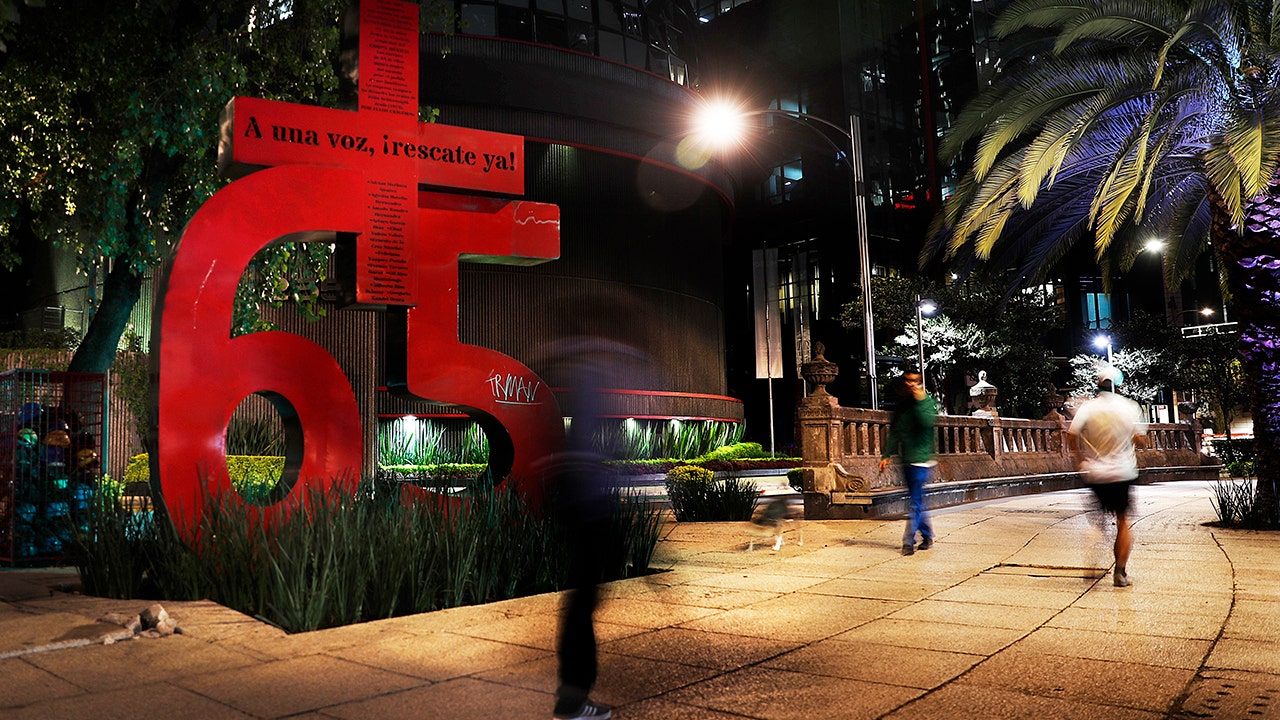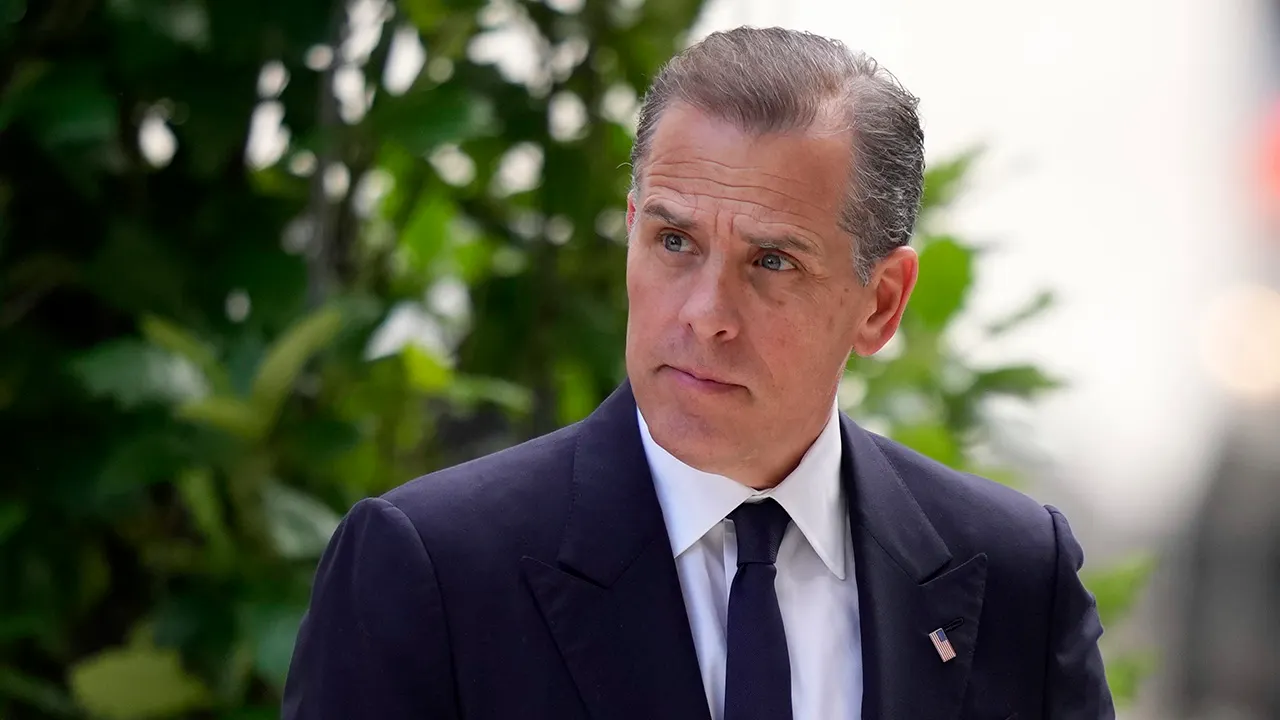World
Syrian refugee sworn in as mayor of German town

Alshebl, who fled the war in Syria eight years ago, has officially taken the seat on Friday after being elected in April.
A refugee from war-torn Syria has made history after he was sworn in as mayor of a German town.
Ryyan Alshebl took the oath as mayor of Ostelsheim, a town 30km (18.6 miles) from the city of Stuttgart, in a solemn municipal council meeting on Friday evening.
The 29-year-old fled the war in Syria eight years ago.
In April, the citizens of the Swabian community of 2,500 inhabitants elected Alshebl as the new head of the town hall with an absolute majority of 55.4 percent.
The Young Mayors Network in Germany said it was unaware of any other refugee who had come to Germany and become the mayor of a German municipality.
There has been no other applicant with Syrian heritage for a mayor’s office in the southeastern German state, according to the municipal association of Baden-Wurttemberg.
“It’s a liberal country. Whoever is ready to do something here can get the opportunity to do so,” Alshebl had told the Reuters news agency in April.
Travelled across Mediterranean
Alshebl, who arrived in Germany aged 21 with a group of friends, was one of hundreds of thousands of refugees who fled Syria when then-chancellor Angela Merkel opened the country’s borders in 2015.
According to the state-run Deutsche Welle (DW) news agency, the new mayor travelled across the Mediterranean at the time before ending up in Germany.
After learning German, Alshebl did an internship at the Althengstett town hall near Ostelheim where he had his first inside look at how public institutions work.
“I asked the mayor whether I could do vocational training here. I made an application and interviews and I got accepted,” said Alshebl, who studied financing and banking in Syria.
“In the first year of my training, I knew that I would do this but the question was when,” he said.
After receiving his German citizenship, Alshebl had been working for the local council in the nearby town of Althengstett before he was elected mayor, DW reported.

World
U.S. bus company Coach files for bankruptcy to sell its business

World
Mexico finds the remains of some of the 63 miners who died 18 years ago

Mexican authorities announced Wednesday that they found the remains of some of the 63 miners who were trapped 18 years ago in a coal mine in northern Mexico.
The accident occurred at the Pasta de Conchos mine in the state of Coahuila, which borders Texas, on Feb. 19, 2006. Of the 73 miners on duty, eight survived with serious burns, and two bodies were recovered.
2 MEXICAN COAL MINERS KILLED IN ACCIDENT AT ILLEGAL MINE
The Interior ministry said Wednesday that after years of searching they were able to locate “the first human remains” in one of the mine’s chambers, but they did not specify when the remains were recovered.
The accident is considered one of the biggest mining tragedies in the country.
Pedestrians walk by a sculpture of a bright red number 65 that pays homage to the coal miners killed in the 2006 Pasta de Conchos mine accident, in Mexico City. Authorities announced on Wednesday, June 12, 2024, the discovery of the skeletal remains of some of the 63 miners who have remained missing for almost two decades. Sixty-five miners died in the explosion, but authorities only found two of the miners’ bodies. (AP Photo/Marco Ugarte)
It wasn’t until 2020 when President Andrés Manuel López Obrador made a promise to recover the bodies that the process began. Three consecutive governments opted not to try for the rest, saying it would be too dangerous and costly, with no guarantee of success. But victims’ relatives continued to press authorities on the issue over the years.
López Obrador put the Federal Electricity Commission, the nation’s public utility known as the CFE, in charge of the dig – mining and burning coal to reach the long-buried miners.
In the chamber where remains were found there were 13 miners working the day of the accident, according to the Interior ministry.
The government indicated it has not yet determined if an explosion caused the mine’s collapse.
The Coahuila state prosecutor’s office, in collaboration with the National Search Commission and the National Institute of Genomics Medicine, will begin analyzing the remains for identification and try to determine the cause of the accident.
World
Significant part of Gaza facing ‘famine-like conditions’, WHO says

Thousands of Palestinian children in Gaza have been diagnosed with malnutrition, the World Health Organization (WHO) has said, as Israel continues to severely restrict supplies of food, water, medicine and fuel to the territory.
“A significant proportion of Gaza’s population is now facing catastrophic hunger and famine-like conditions,” WHO chief Tedros Adhanom Ghebreyesus told reporters on Wednesday.
“Despite reports of increased delivery of food, there is currently no evidence that those who need it most are receiving sufficient quantity and quality of food.”
Tedros said 8,000 children under five years old have been diagnosed and treated for acute malnutrition in Gaza.
“However, due to insecurity and lack of access, only two stabilisation centres for severely malnourished patients can operate,” the WHO chief added.
Tedros said 32 deaths in the besieged Palestinian enclave have been attributed to malnutrition.
United Nations officials have warned of the risk of famine as Israel continues its war on Gaza. In January, the International Court of Justice ordered Israel to “ensure the delivery of basic services and essential humanitarian aid to civilians in Gaza”.
The UN’s top court reasserted that ruling in March, demanding that Israel take “all necessary and effective measures to ensure, without delay… the unhindered provision at scale by all concerned of urgently needed basic services and humanitarian assistance”.
Some of Israel’s closest allies, including the United States, have also called for more aid to enter Gaza and reach people in need.
Last month, Israel seized and shut down the Palestinian side of the Rafah crossing between Gaza and Egypt, which had served as a major gateway for aid and humanitarian workers.
Last month, International Criminal Court prosecutor Karim Khan requested arrest warrants for Israeli Prime Minister Benjamin Netanyahu and Defence Minister Yoav Gallant on charges of alleged war crimes, including using “starvation of civilians as a method of warfare”.
A UN-backed independent commission also accused Israel of inflicting hunger on Palestinians.
“In relation to Israeli military operations and attacks in Gaza, the Commission found that Israeli authorities are responsible for the war crimes of starvation as a method of warfare, murder or wilful killing, intentionally directing attacks against civilians and civilian objects, forcible transfer, sexual violence, torture and inhuman or cruel treatment, arbitrary detention and outrages upon personal dignity,” the panel said in a report on Wednesday.
US Secretary of State Antony Blinken said earlier this week that Israel has taken “important steps” in recent months to remove obstacles to aid delivery in Gaza, but he acknowledged that it “can and must do more”.
“It is crucial to speed up the inspection of trucks and reduce backlogs; to provide greater clarity on – and shorten the list of – prohibited goods; to increase visas for aid workers and to process them more quickly,” he said at a Gaza aid conference in Jordan on Tuesday.
Blinken, who announced $404m in new assistance to Palestinians, also called for “clearer, more effective channels” to protect humanitarian workers from military operations.
Israeli attacks have killed at least 270 aid workers in Gaza, including seven World Central Kitchen employees in April – an incident that sparked global outrage.
Aid organisations have been stressing that even the inadequate aid that gets into Gaza often fails to reach people who need it most because of the Israeli offensive.
“The US’s latest humanitarian package for Gaza is a welcome step,” the International Rescue Committee said on Wednesday. “However, the effective delivery of any financial package depends wholly on unfettered access for aid and the ability for aid workers to operate seamlessly.”
Beyond Gaza, the WHO’s Tedros highlighted a growing health crisis in the occupied West Bank, where Israeli forces have killed hundreds of people since the outbreak of the war.
“WHO has documented 480 attacks on healthcare in the West Bank since the seventh of October last year, resulting in 16 deaths and 95 injuries,” he said.
In one major incident, undercover Israeli forces raided a hospital in Jenin and killed three people inside the medical centre.
-

 Fitness1 week ago
Fitness1 week agoThe five simple exercises that are crucial in midlife
-

 Politics1 week ago
Politics1 week ago5 things to know about Hunter Biden trial
-

 World1 week ago
World1 week agoChina denies fuelling Russia-Ukraine war tensions, says it supports peace
-

 World7 days ago
World7 days agoEconomy, migration: Voters' main concerns ahead of elections
-

 News1 week ago
News1 week agoWhat is D-Day? How the Normandy landings led to Germany’s defeat in World War II | CNN
-

 World1 week ago
World1 week agoWill liberals be biggest losers of EU election?
-

 Politics1 week ago
Politics1 week agoHunter Biden trial enters 3rd day with cross-examination of FBI agent
-

 Politics7 days ago
Politics7 days agoTrump campaign accelerates vetting of potential running mates
















